September 2024
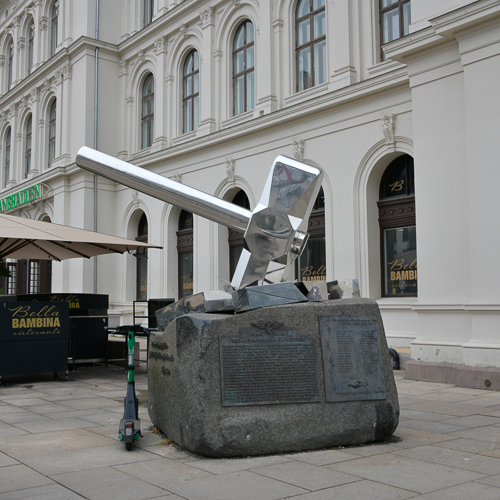
Knus Nazismen
On the side of the main train station is Knus Nazismen. It was dedicated by five remaining members of the Osvald group, a Norwegian organization active during World War II. The organization committed at least 110 acts of sabotage against Nazi occupying forces and the collaborationist government of Vidkun Quisling. On February 2, 1942, they detonated a bomb at Oslo East Station in protest against Quisling’s inauguration as Minister-President.
It was sculpted by Bjorn Melbye and unveiled on May 1st, 2015. The monument depicts a silver hammer smashing a silver swastika. The hammer and swastika rest atop a large boulder with the inscription, “It was worth fighting for freedom for all nations, for all races, for all classes, for all people” Asbjorn Sunde. (leader Osvald Group)
There are two plaques on the bedrock, one to members of the Osvald Group who gave their lives in the war from 1940 to 1945 and the other to members of the State Railway who also gave their lives.
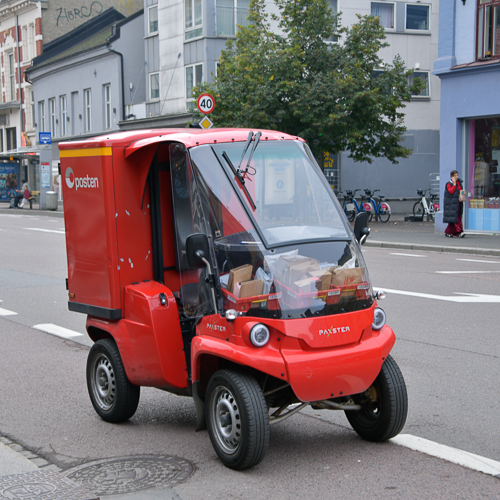
A postal delivery
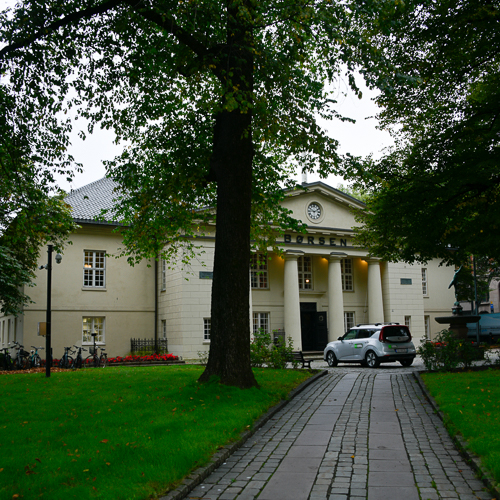
Oslo Bors
The Oslo Bors, or stock exchange building, was constructed in 1827 and designed by Christian H. Grosch. It is Norway’s first monumental building. The garden was planted in the early 1800s and was Oslos’ first public park. Stock exchange trading is now fully electronic, so this building now serves as offices for the Bors.
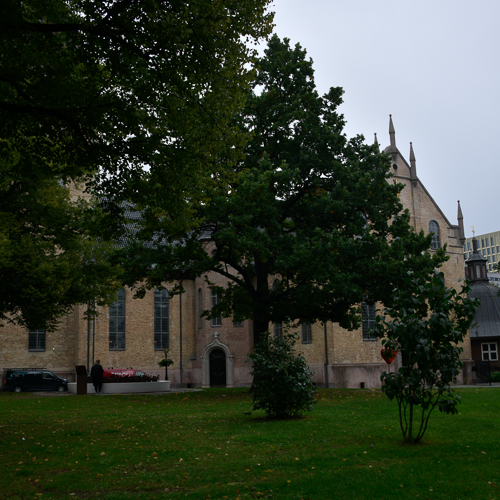
Oslo Cathedral
Surrounded by trees, the Cathedral is difficult to photograph from the outside. It was rebuilt between 1848 and 1850 after a plan by German-born architect Alexis de Chateauneuf.

The Norwegian firm Ryde & Berg A/S was chosen to build the new main organ, with 53 stops which was inaugurated for the cathedral’s 300th anniversary in 1997.

The ceiling murals were painted by Hugo Lous Mohr between 1936 and 1950. They depict scenes from the Bible and the history of Christianity in Norway and are considered some of the finest examples of religious painting in the country.
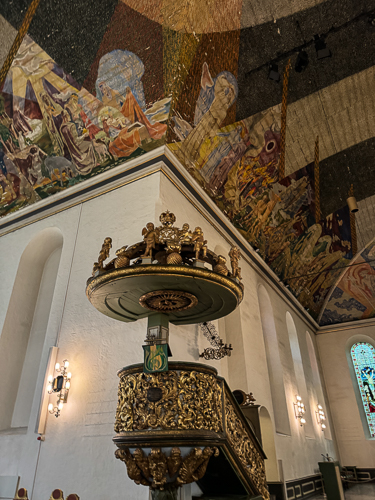 *
*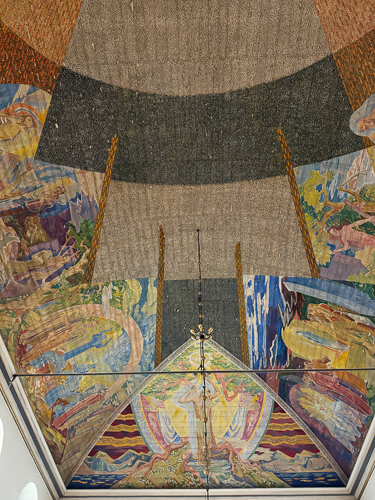
*
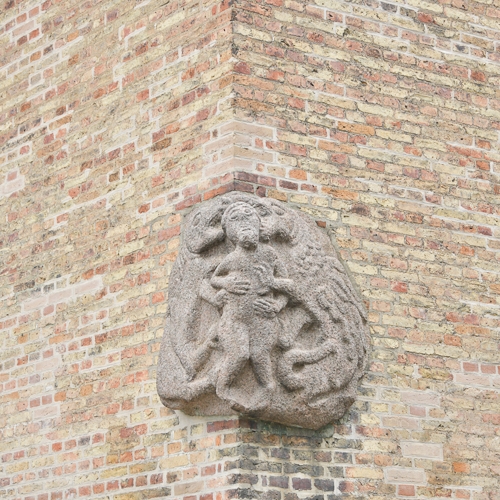
The Devil of Norway
On the exterior of the Cathedral is the Devil of Norway. It is about 900 years old and was found among the ruins of St. Hallvard’s Cathedral. The statue was removed from the ruins and placed on the walls of the Oslo Cathedral. The figure depicts a man being attacked by a dragon and a lion on both sides.
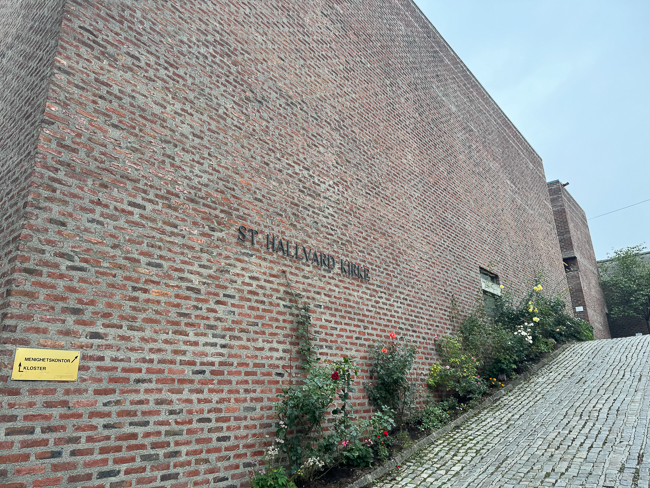
Saint Hallvard
Saint Hallvard’s is the home of the country’s largest Roman Catholic parish and is named after the city’s guardian saint.
After slogging up a ridiculous hill through dirt paths and large residential highrises, I found the church to be closed. I had attempted a visit because of its interior dome.
The Brutalist building was built in 1964 by the architecture firm of Lund & Slaatto. Its main feature is an asymmetrical inverted concrete dome that, viewed from the air, looks like a huge bowl. I borrowed this interior photo from an architecture website.

St Hallvard’s inverted dome from the interior
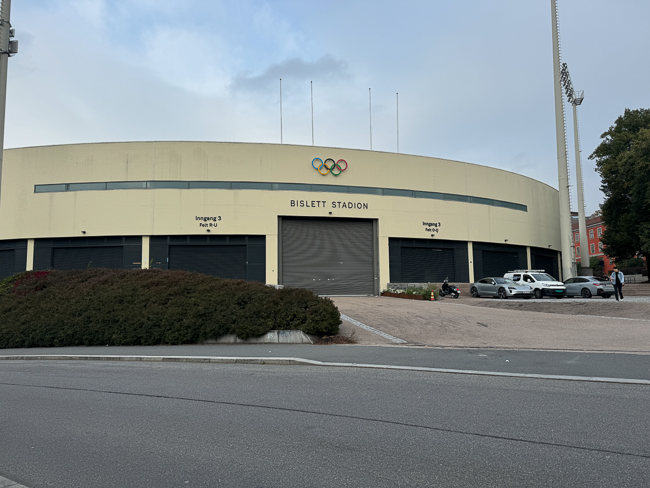
Bislett Stadium
Bislett became Norway’s main arena for speed skating and track and field in 1940 and was designed by the architect Frode Rinnan. At the 1952 Winter Olympics, the stadium hosted some figure skating and speed skating events.
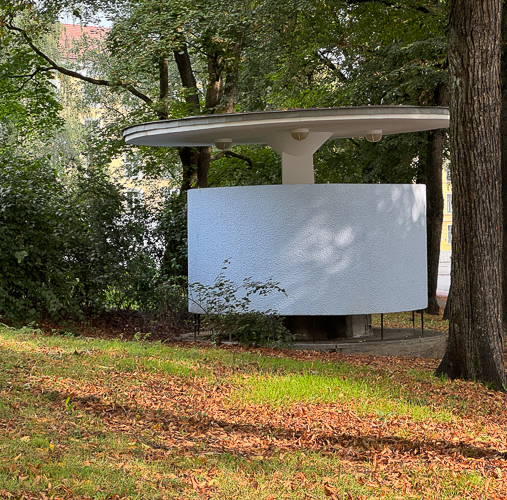
Kjærlighetskarusellen (The Carousel of Love)
Not far from Bislett Stadium is the urinal Kjærlighetskarusellen. It is not exactly something to go out of one’s way for, except that it is a Norwegian Cultural Heritage Site. Nicknamed the Carousel of Love, it served as an important meeting place for gay men during a time when homosexuality was taboo in Norway. Sex between men was illegal in Norway until 1972.
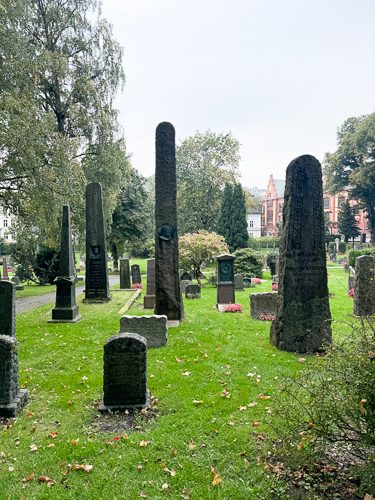
Our Saviours Cemetery
Of course, I visited a cemetery in Oslo. The most famous is the Cemetery of Our Saviour, which was created in 1808 due to the great famine and cholera epidemic of the Napoleonic Wars. Its grounds were extended in 1911. The cemetery has been full and thus closed for new graves since 1952, with interment only allowed in existing family graves.
There are many famous people buried here, but the two I recognized were Edvard Munch and Henrik Ibsen.
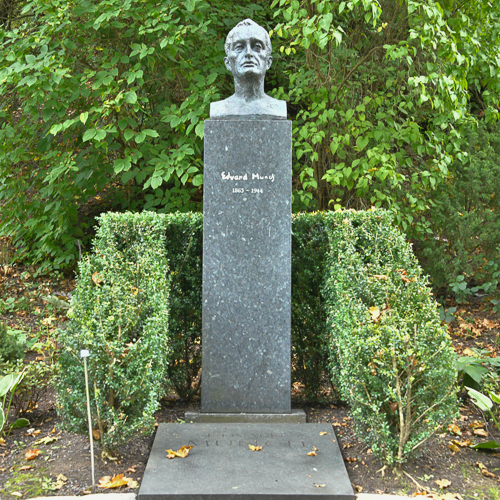
Grave of Edvard Munch
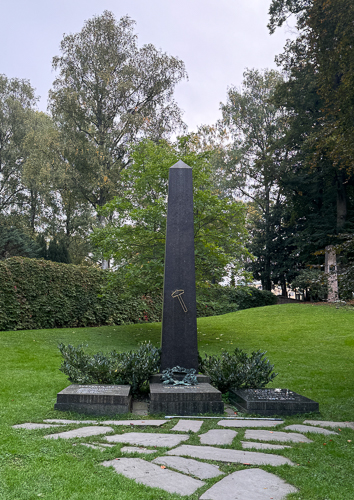
The grave of Henrik Ibsen and his family
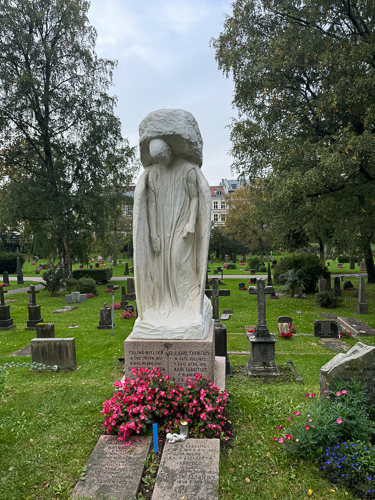
Obelisks and stones were the majority of grave markings, but I found this one carving.

Our Saviours Cemetery
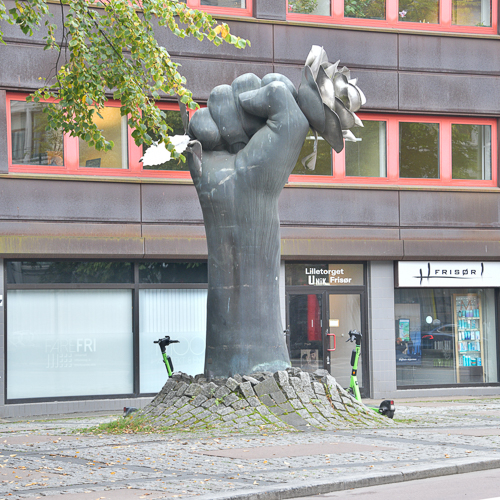
Public Art in Oslo – Neve Og Rose by Ola Enstad
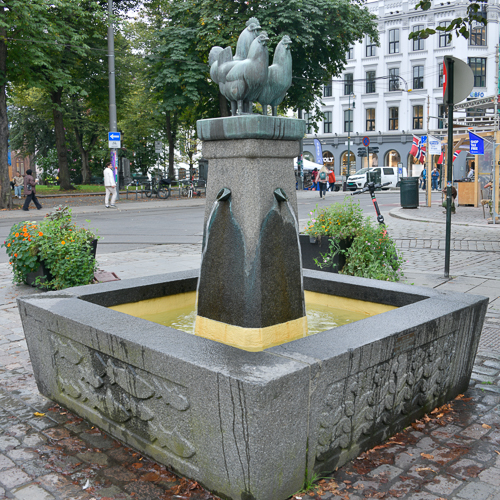
Fountain by Skule Waksvik
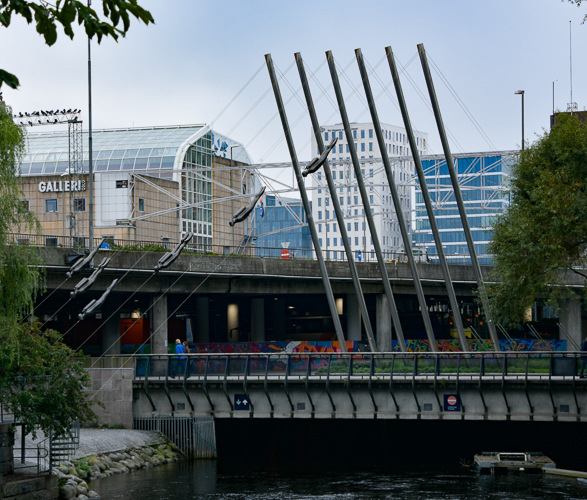
Ola Enstad’s stainless steel outdoor sculpture Dykkar skulptur (Diver sculpture) near Radisson Blu hotel in the Vaterland neighborhood
While wandering, I found this lovely sculpture by Ola Enstad, “Diver sculpture.” It consists of six stylized life-size divers diving into the Akerselva River.
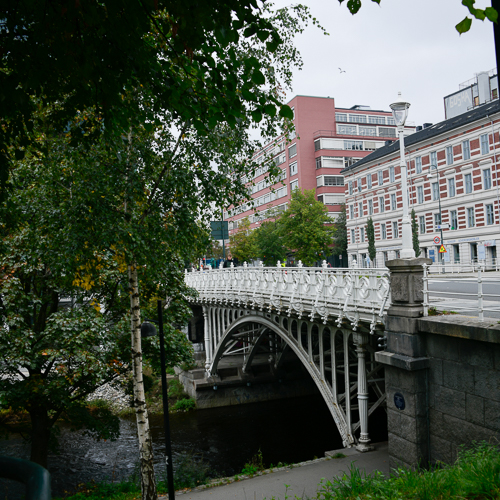
Not far away, I walked across this stunning white bridge that crossed the Akerselva River. It struck me how it would be such a delight to walk the river and see all the other beautiful sites. There seems to never be enough time to accomplish all one wants when traveling.
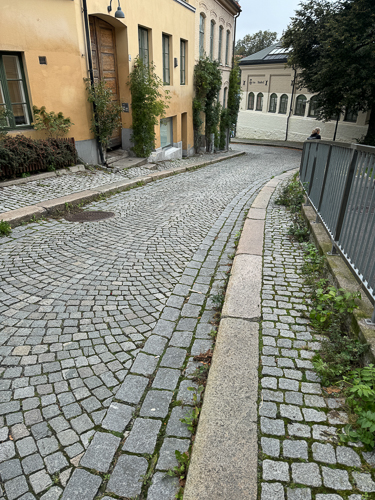
The steepness of this little road doesn’t show how much uphill I walked, but what it will show you is the fact that it is not a city to walk without a good solid pair of shoes.
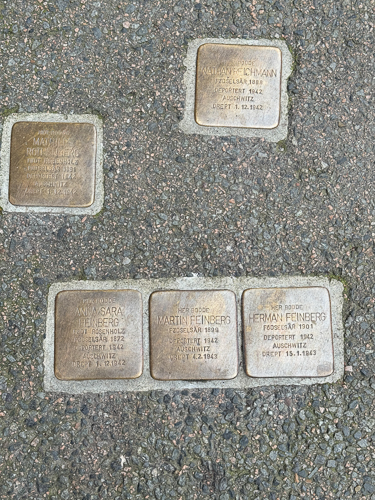
Stolperstein
In my aimless walking, I spotted these stolperstein. I have seen them before, after being introduced to them by a dear friend who now lives in Jerusalem. A Stolperstein is a brass plate inscribed with the name and life dates of victims of Nazi extermination or persecution. Literally, it means ‘stumbling stone’ and metaphorically ‘stumbling block’.
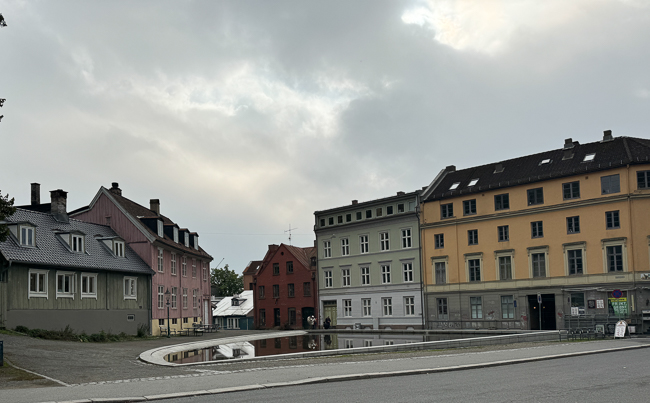
A lovely little glimpse of the historic Damstredet area
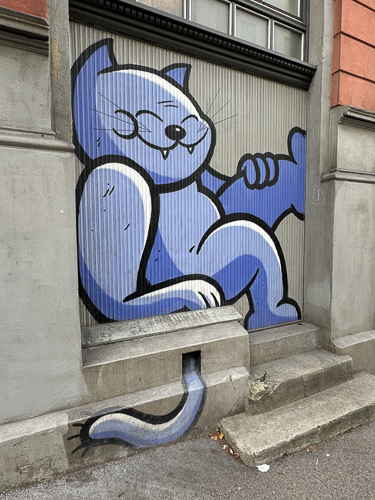
*
It was an exhausting day, but the weather was glorious. I had the most incredible lobster roll for lunch at Code Restaurant (Dronning Eufemias gate 18) and fabulous Ramen for dinner at Koie Ramen, where, ironically, the chef is Filipino.